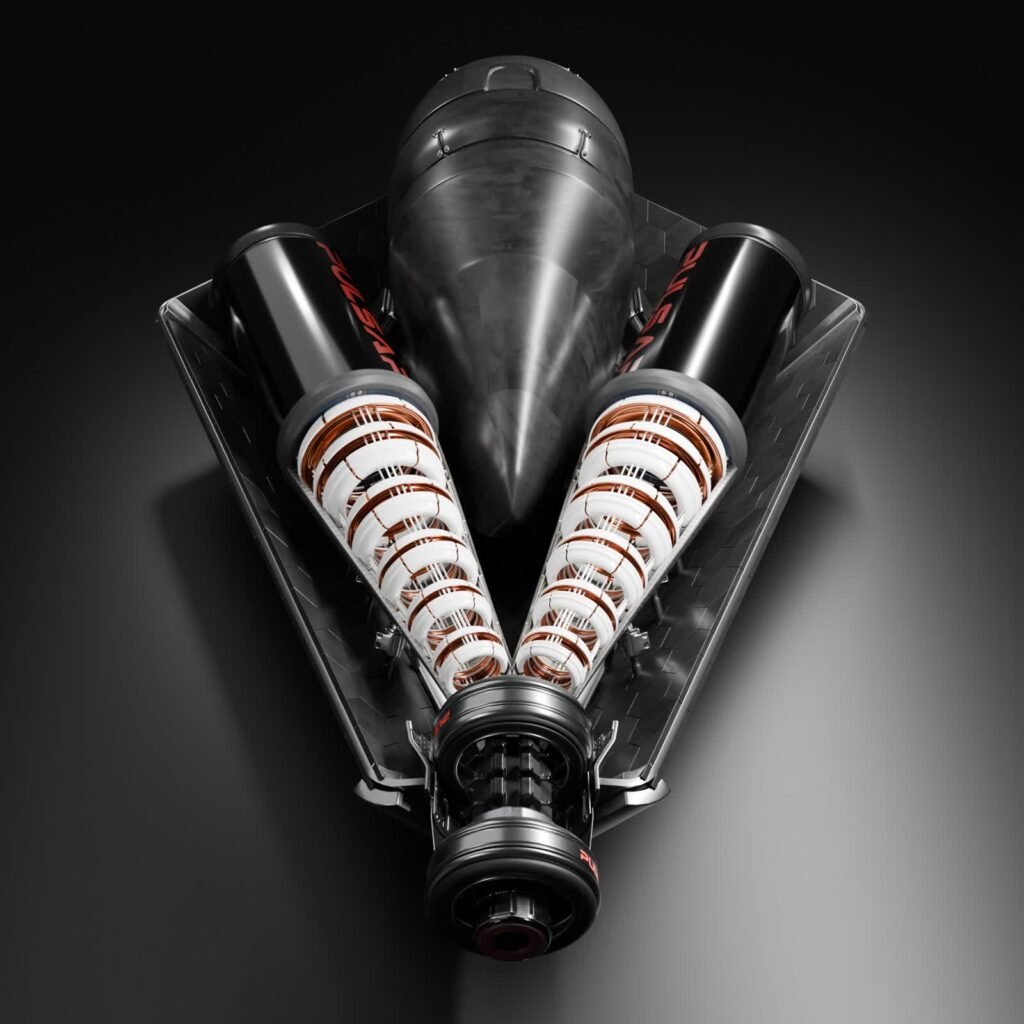Fusion rocket may lower Mars journeys in half and attain Pluto in 4 years

Ahead-looking: British startup Pulsar Fusion has unveiled its formidable nuclear fusion rocket idea, Sunbird, designed to dramatically shorten interplanetary journey instances. Developed in secret over the previous decade, the venture goals to chop the journey to Mars in half and attain Pluto in simply 4 years. With floor testing scheduled for 2025 and an orbital demonstration deliberate for 2027, Sunbird may mark a daring leap ahead in next-generation propulsion expertise.
Not like typical chemical rockets, Sunbird depends on nuclear fusion – a course of that replicates the power manufacturing on the core of stars – to propel spacecraft. Relatively than working independently, these fusion-powered autos are designed to connect to bigger spacecraft, towing payloads effectively throughout huge interplanetary distances.
Fusion propulsion builds on Pulsar Fusion’s prior collaborations with main tutorial establishments. In 2023, the corporate partnered with the Universities of Southampton and Cambridge on UK House Company-funded initiatives exploring built-in nuclear fission methods for electrical propulsion.
“Now we have just lately commissioned not one, however two of the biggest area propulsion testing chambers within the U.Okay., if not all of Europe,” mentioned CEO Richard Dinan. “Pulsar is now a global area propulsion testing powerhouse, and we now have formidable plans to broaden quickly.”
The corporate’s speedy focus is progressing towards in-orbit testing. Parts of Sunbird are scheduled for demonstration later this 12 months as Pulsar Fusion pushes ahead with its purpose of reaching nuclear fusion in area by 2027. The broader imaginative and prescient consists of deploying a fleet of closely shielded spacecraft stationed in orbit to assist missions for worldwide companions, doubtlessly enabling routine journey between Earth, Mars, and past.

Nuclear fusion gives transformative potential over conventional power sources akin to nuclear fission or fossil fuels. Whereas fission splits heavy radioactive components like uranium into lighter ones, fusion combines gentle components – sometimes hydrogen – beneath excessive temperatures and pressures. The result’s a course of that generates 4 instances extra power than fission and tens of millions of instances greater than fossil fuels, all whereas producing no harmful radioactive waste.
Regardless of its promise, sustaining fusion reactions on Earth stays troublesome as a result of immense power enter required.
Dinan argues that area presents a extra favorable setting for fusion, due to its pure lack of atmospheric interference. “It’s totally unnatural to do fusion on Earth,” Dinan informed CNN. “House is a much more logical, smart place to do fusion as a result of that is the place it desires to occur anyway.”
The Sunbird’s design capitalizes on this benefit through the use of linear reactors reasonably than the round tokamaks generally employed on Earth. These reactors make the most of robust magnetic fields to warmth plasma, creating the circumstances mandatory for fusion utilizing hint quantities of gasoline, akin to helium-3.
Not like Earth-based reactors that depend on neutron interactions for warmth, Sunbird would produce protons as “nuclear exhaust,” immediately propelling the spacecraft. Whereas this methodology is inefficient and expensive for terrestrial power technology, it’s well-suited for area journey, the place lowering gasoline mass and reaching excessive speeds are essential.
Dinan likened Sunbird’s performance to city bike-sharing methods: reusable autos stationed in orbit that rendezvous with spacecraft mid-journey to switch inefficient chemical engines with fusion-powered alternate options. This idea may dramatically shorten interplanetary missions, enabling journeys between Earth and Mars in beneath six months and journeys to Jupiter or Saturn in simply two to 4 years.
Preliminary demonstrations will start with testing circuit boards in orbit later this 12 months, adopted by a small-scale linear fusion experiment in 2027 to validate the underlying physics. If profitable, full-scale Sunbird autos may very well be operational inside 5 years.
Sunbird’s potential extends past interplanetary journey. It may additionally assist asteroid mining missions, reducing round-trip instances from three years to as little as one or two.
Different organizations are pursuing comparable paths. Helicity House, for instance, has secured an funding from Lockheed Martin to develop its personal fusion engine, whereas NASA and Basic Atomics are advancing fission-based reactors for potential crewed Mars missions, with assessments scheduled for 2027.
Specialists exterior Pulsar Fusion acknowledge the transformative potential of fusion propulsion, regardless of its technical challenges. Aaron Knoll of Imperial School London informed CNN that whereas power output should exceed enter for Earth-based energy technology, area propulsion advantages from any web power because it immediately boosts thrust effectivity. Nonetheless, miniaturizing the reactor and assist methods stays a key engineering problem.
Bhuvana Srinivasan from the College of Washington emphasised the dramatic benefits fusion propulsion may supply, even for lunar missions. With its excessive thrust and effectivity, it may allow single-trip deployments of complete lunar bases, full with crew. She additionally highlighted the potential for utilizing fusion-powered missions for useful resource extraction, akin to harvesting helium-3 from the Moon – a essential gasoline for future fusion reactors.
Unlocking fusion propulsion, she added, wouldn’t solely lengthen humanity’s attain into deep area however may additionally convey wide-ranging advantages. “Exploration of planets, moons, and photo voltaic methods farther away is key to our curious and exploratory nature as people whereas additionally doubtlessly resulting in substantial monetary and societal profit in ways in which we could not but notice.”








